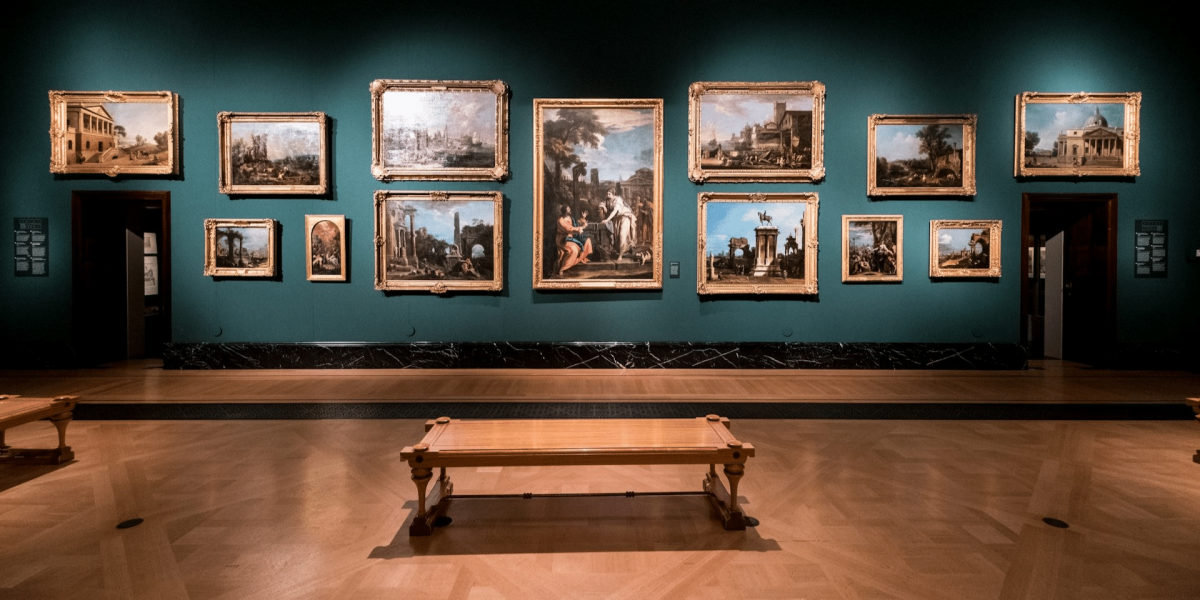Art has always been a reflection of society, culture, and human experience. Throughout history, Europe has played a central role in shaping the course of artistic development, with each era marked by distinct movements, styles, and innovations. From the Renaissance to the Romantic period, Europe has continuously evolved, influencing artistic trends and setting standards for creativity and expression. This article explores how Europe has changed art over the centuries, tracing its rich legacy and enduring impact on the world of art.
Europe has long been regarded as the cradle of Western civilization, producing some of the most celebrated artists, artworks, and art movements in history. From the ancient civilizations of Greece and Rome to the Renaissance, Baroque, and beyond, European art has left an indelible mark on the global artistic landscape. Through a combination of innovation, experimentation, and cultural exchange, Europe has transformed art into a dynamic and ever-evolving form of expression.
The Cultural Diversity of Europe
One of the defining characteristics of European art is its diversity, reflecting the rich tapestry of cultures, traditions, and influences that have shaped the continent over millennia. From the classical sculptures of ancient Greece to the intricate mosaics of Byzantium, Europe’s artistic heritage is as varied as it is vast. Each region and era have contributed its own unique artistic traditions, resulting in a kaleidoscope of styles and techniques that continue to inspire artists and audiences alike.
The Renaissance: A Rebirth of Artistic Expression
The Renaissance, which began in Italy in the 14th century and spread throughout Europe, marked a pivotal moment in the history of art. Characterized by a revival of classical ideals, humanism, and scientific inquiry, the Renaissance saw a resurgence of interest in art, literature, and culture. Artists such as Leonardo da Vinci, Michelangelo, and Raphael ushered in a new era of creativity, producing masterpieces that celebrated the beauty of the natural world and the complexity of the human experience.
Humanism and the Celebration of Individuality
One of the key features of Renaissance art was its celebration of humanism, a philosophical movement that emphasized the dignity, worth, and potential of the individual. Renaissance artists sought to capture the essence of human emotion and experience in their work, exploring themes such as love, beauty, and mortality with unprecedented depth and realism. The rise of portraiture and self-portraiture during this period reflected a growing interest in the inner lives and personalities of individuals, as artists sought to capture the unique character and spirit of their subjects.
The Baroque Period: Drama, Emotion, and Grandeur
Following the Renaissance, Europe entered the Baroque period, a time of dramatic artistic expression characterized by exaggerated motion, emotion, and grandeur. Baroque artists sought to evoke powerful emotional responses from viewers through dynamic compositions, intense lighting, and rich symbolism. Figures such as Caravaggio, Rembrandt, and Bernini pushed the boundaries of artistic innovation, creating works that captivated audiences with their theatricality and depth of emotion.
Theatricality and Spectacle in Baroque Art
One of the hallmarks of Baroque art was its theatricality and sense of spectacle. Baroque artists employed dramatic lighting, bold gestures, and dynamic compositions to create works that dazzled the senses and engaged the emotions of viewers. Whether depicting religious subjects, historical events, or mythological scenes, Baroque artists spared no effort in creating works that were larger-than-life in their scale and impact. The grandeur and opulence of Baroque art reflected the power and prestige of the institutions and patrons who commissioned them, as well as the dynamism and vitality of the societies in which they were created.
The Enlightenment and Neoclassicism: Reason and Order
The Enlightenment, a philosophical movement that swept across Europe in the 18th century, brought about a shift in artistic sensibilities towards reason, logic, and order. Neoclassical artists looked to the art and architecture of ancient Greece and Rome for inspiration, embracing symmetry, clarity, and rationality in their work. Figures such as Jacques-Louis David and Jean-Auguste-Dominique Ingres produced paintings that celebrated heroic ideals and moral virtue, reflecting the values of the Enlightenment era.
The Influence of Antiquity on Neoclassical Art
Neoclassical art was deeply influenced by the art and culture of ancient Greece and Rome, which were seen as embodiments of reason, harmony, and order. Neoclassical artists sought to emulate the style and subject matter of classical antiquity, drawing inspiration from mythological narratives, historical events, and allegorical themes. The revival of classical motifs and forms in Neoclassical art reflected a desire to reconnect with the ideals of ancient civilizations, as well as a belief in the universal principles of beauty, truth, and justice that they embodied.
Romanticism: Emotion, Nature, and the Sublime
In contrast to the rationalism of the Enlightenment, the Romantic movement emerged in the late 18th and early 19th centuries as a reaction against the constraints of reason and order. Romantic artists embraced emotion, imagination, and the beauty of nature, seeking to evoke a sense of awe and wonder in their viewers. Figures such as J.M.W. Turner, Caspar David Friedrich, and Eugène Delacroix explored themes of passion, individualism, and the sublime, creating works that spoke to the depths of the human soul.
Nature as a Source of Inspiration
One of the central themes of Romantic art was the celebration of nature as a source of inspiration and spiritual renewal. Romantic artists were drawn to the sublime beauty and power of the natural world, depicting rugged landscapes, stormy seas, and majestic mountains with a sense of awe and reverence. Nature served as a metaphor for the human condition, reflecting the tumultuous emotions and existential struggles of the Romantic soul. Through their depictions of nature, Romantic artists sought to evoke a sense of wonder and transcendence, inviting viewers to contemplate the mysteries of the universe and their place within it.
Impressionism and Beyond: Capturing the Moment
In the late 19th century, Europe witnessed the rise of Impressionism, a revolutionary art movement that sought to capture the fleeting effects of light and atmosphere. Artists such as Claude Monet, Pierre-Auguste Renoir, and Edgar Degas broke away from traditional techniques and subjects, opting instead to paint en plein air and focus on the sensory experience of the moment. Impressionism paved the way for subsequent movements such as Post-Impressionism, Cubism, and Surrealism, each pushing the boundaries of artistic expression in new and innovative ways.
The Influence of Photography on Impressionism
One of the key influences on Impressionism was the invention of photography, which allowed artists to capture the ephemeral effects of light and movement with unprecedented accuracy. Impressionist painters embraced the spontaneity and immediacy of photography, seeking to emulate its effects in their own work. The use of rapid brushstrokes, vibrant color palettes, and dynamic compositions in Impressionist art reflected a desire to capture the essence of a scene or moment in time, rather than reproduce it with photographic precision. Through their innovative techniques and radical approach to representation, Impressionist artists revolutionized the way we perceive and experience the world around us.
Takeaway
Art in Europe has undergone a remarkable evolution over the centuries, reflecting the changing values, beliefs, and aspirations of society. From the classical ideals of ancient Greece and Rome to the romanticism of the 19th century, European art has continuously pushed the boundaries of creativity and expression, inspiring generations of artists and audiences alike. Through its rich and diverse artistic heritage, Europe has left an indelible mark on the global cultural landscape, shaping the course of art history and influencing artistic trends and movements around the world. As we continue to navigate the complexities of the modern world, the legacy of European art serves as a testament to the enduring power of creativity, imagination, and human ingenuity.



















